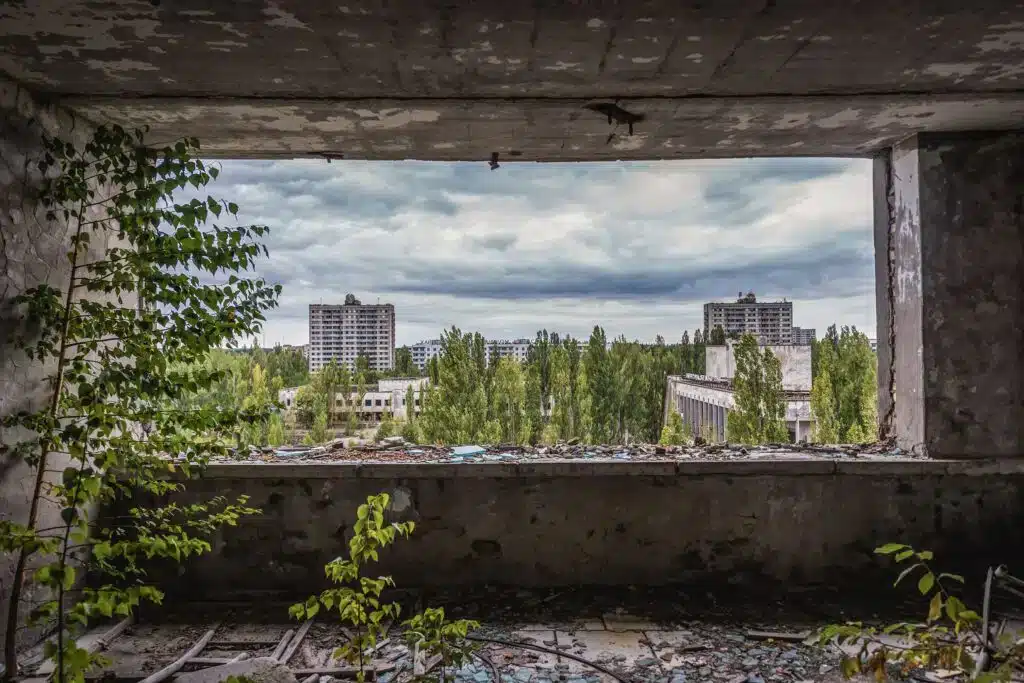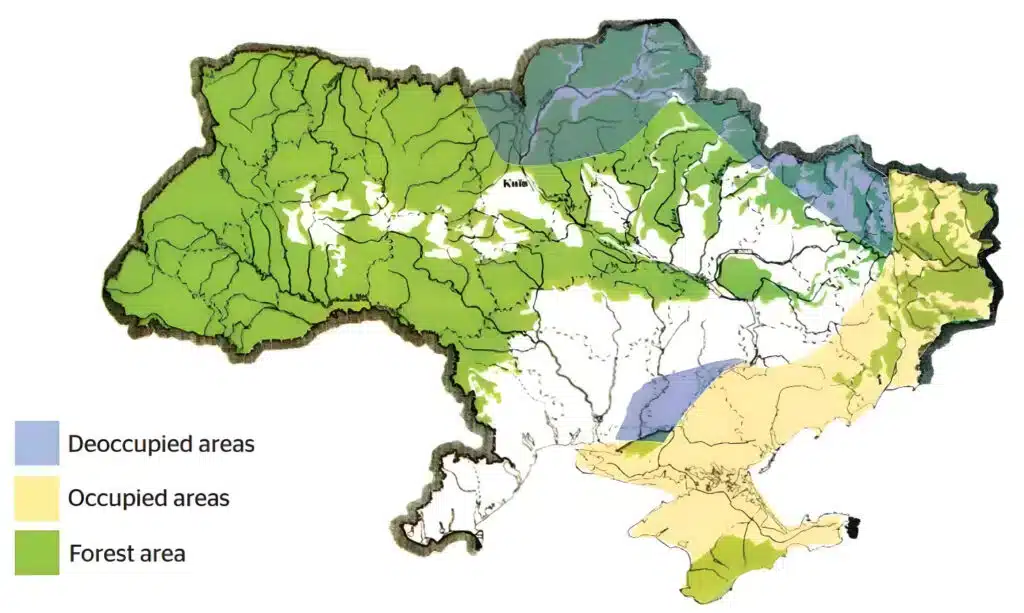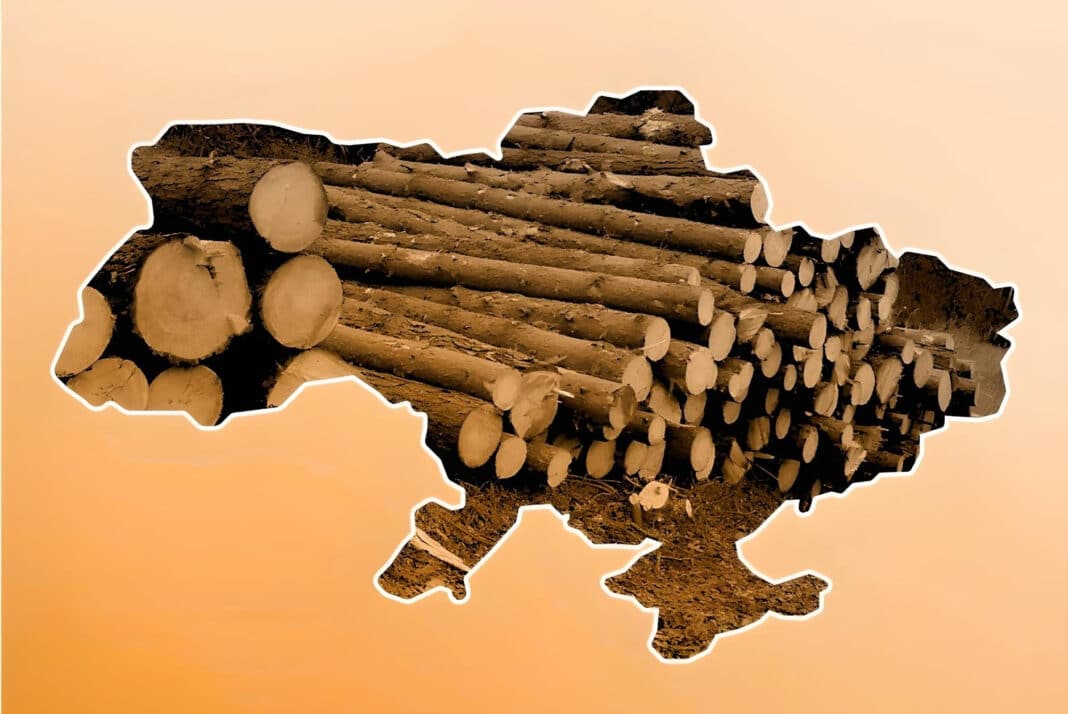Ukrainian crime syndicates continue to falsify documents and flood European markets with illegal and deforested timber – with forest officials helping gangs sell an increasing amount of wooden pallets and furniture into the European Union.
It comes after Wood Central reported, back in April, that organised crime was cutting more and more rare and endangered forests inside the Chornobyl exclusion zone, converting proceeds of crime into foreign currency and using conflict and illegal logging to fuel criminal networks.
Now, Ecopolitics reports that the State Agency of Ukraine on Exclusion Zone Management (or the SAUEZM), responsible for managing the 30km exclusion zone, is still permitting “continuous sanitary logging” of forests close to the Chornobyl Nuclear Power Plant, in breach of Ukrainian law, with gangs generating millions of dollars in new timber sales.
“In the Chornobyl Exclusion Zone, hundreds of century-old pines worth UAH 120 million were illegally cut down,” according to Ukrainian auditors State auditors, who last month inspected SAUEZM’s management of exclusion zone within the Red Forests, or the “Pivnichna Pushcha.”

Organised crime rackets involve accountants, businesses and brokers…
As per the Kyiv-based Ukrainian Independent Information Agency of News (UNN), “the smugglers (cutting in the Chornobyl exclusion zone) operate as a well-developed criminal scheme,” adding that they “ordered the manufacture of timber products…and used falsified documentation to get customs clearance and ship the product into international markets.”
However, Wood Central understands that gangs are also operating outside Chornobyl, with the Ukrainian courts prosecuting cases connected to the illegal trade in Mykolaiv, Lutsk, Nikolaev and Kovel.

In recent months, the Zelenskyy has vowed to crack down on the surge of “gray wood” – where timber is felled and sold into shadow markets via crime syndicates, vowing to develop a “European model” for monitoring in the lead-up to the European Union Deforestation Regulation (EUDR).
Ukraine is Europe’s third most important market for timber furniture imports.
Since Russia’s full-scale invasion, the value of the Ukrainian forest economy has drastically increased relative to all other industries. As a result, Ukraine is now ramping up timber cutting to supply the EU with energy, front-line military fortifications, wooden pallets, and furniture.
According to Eurostat, the EU’s office for statistics, Ukraine is the zones third most important market for timber furniture (10.1% of total imports), behind only China (47%) and Turkey (10.2%) but ahead of Vietnam (5.1%).
“This is because Ukraine’s main industrial areas were located in occupied and fought-over territories…with forests, thankfully, largely located in the “safe” areas of Ukraine and thus remain a largely intact resource,” according to a report provided by the Basel Institute of Governance, published last year, which added that forest products made up less than 1.5% of Ukraine’s GDP in the lead up to the conflict.

However, “continued attacks on civilian infrastructure are creating a high demand for forest products to generate heat and be used in reconstruction efforts,” the report said, adding that “the Ukrainian Government has recognised the sector’s increased importance by creating a new state-owned enterprise, Forests of Ukraine – now the country’s largest entity.”
To date, more than 3.5 million hectares of Ukrainian forests have been damaged and destroyed from combat since the start of the war, with officials now working with US tech mogul Peter Thiel to use AI-powered drones to demine large swathes of forests.
- To learn more about the Ukraine war and its impact on the global forest economy, please review Wood Central’s special feature.






